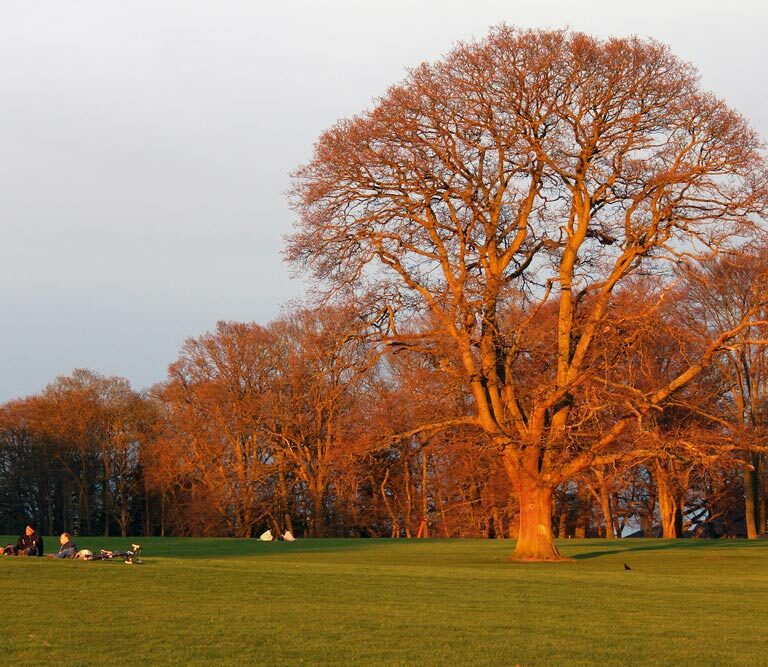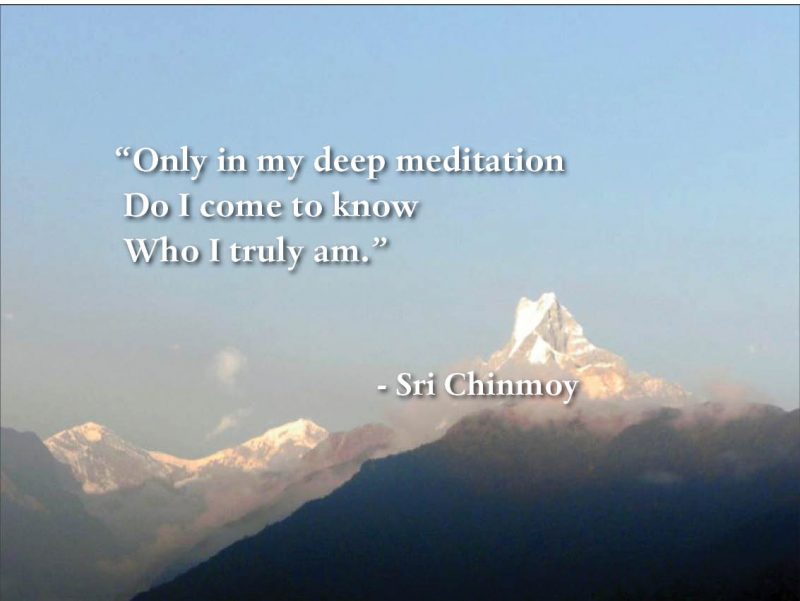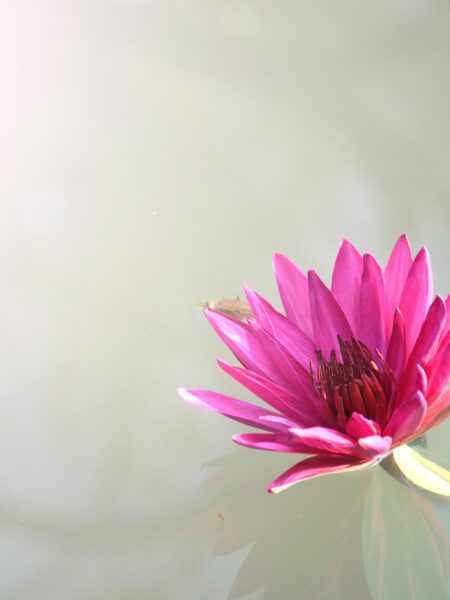What are the essential aspects of meditation?
These are some of the building blocks of how to meditate and how to get started with our own meditation practise.
Simplicity and experience
Meditation is inherently simple. When we meditate well, we feel we are doing something natural, spontaneous and joyful. We can read many books about meditation, but to really know what it is – we have to practise and experience meditation for ourselves. The art of meditation is not a complicated or intellectual subject, but something we try to experience inwardly.
Concentration
The first step in meditation is to improve our concentration. This is the ability to be aware and focused on only one thing at a time. When we concentrate we put all our attention into the smallest object and exclude everything else. Often in daily life, we get easily distracted; the mind flits from one subject to another. But, when starting meditation we try to keep our attention closely focused. As soon as our mind wanders, we need to bring it back on the object of our concentration. Feel like you are a charioteer, whenever the horse (your mind) veers off course, you must use the reins to keep it going in the right direction.
To improve concentration, try these simple concentration exercise, which includes focusing on a candle.
Breathing
Nothing is more natural and spontaneous than breathing. It is the essence of life, yet mostly we breathe unconsciously. In meditation, we can observe our own breathing and use it to still the mind.
- A very simple exercise is to watch your own breath.
- Feel the breathe coming into your body.
- Take a pause to hold your breath momentarily before exhaling.
- The secret is to concentrate all your attention on your breathing.
- Ignore everything else, but the simple awareness of breathing.
- When breathing in, you can also imagine you are breathing in the quality of peace.
This simple breathing exercise gives us something very simple to focus on. It also helps to quieten the mind as breathing has a strong influence on our state of mind.
Discipline the mind
“When you meditate, what you actually do is to enter into a calm or still, silent mind. We have to be fully aware of the arrival and attack of thoughts. That is to say, we shall not allow any thought, divine or undivine, good or bad, to enter into our mind. Our mind should be absolutely silent.”
– Sri Chinmoy [1]
To get the most from meditation, we need to still the mind. We need to detach from our own thoughts so that the mind eventually becomes silent. When the mind is vacant and still – it gives room for peace to enter. There is an old saying that to fill a pot with honey, you must first empty all the water first. It is the same with meditation, we try to empty our mind of useless thoughts, so we can make room for the peace and bliss of meditation.
How to quieten the mind
When you first start meditation, you may be surprised at how active your mind is. But, don’t despair! it can definitely be made quiet.
- As soon as a thought comes, don’t pursue it. Let go. Feel it is as insignificant as a fly.
- Feel thoughts are separate to your self. Feel thoughts are coming from outside of you. Then, even if they come, they will feel less pressing, more distant and easier to ignore.
- See also: How to stop negative thoughts
The heart
It is hard to meditate in the mind. Instead we can use the power of the heart. The heart isn’t just a physical organ, it is in the heart that we can feel the presence of our soul – our innermost self. The nature of the heart is to experience oneness and peace. The heart doesn’t manufacture thoughts. When our mind feels it is revolving like a wheel, we can try diving into the heart. Try to feel your sense of being is leaving the brain, leaving the mind and entering into the heart. If you can focus your sense of self here, it will be much easier to be unencumbered by thoughts. Also, a secret of meditation is to realise that it is not all about our own efforts. The more we progress in meditation, the more we feel the awareness of something deeper, purer and more illumining – which gives us the capacity to meditate.
Aspiration
My meditation teacher, Sri Chinmoy, says the real secret of meditation is not in mastering different techniques; the real secret is our own inner aspiration – our inner cry to grow into something deeper, vaster and more fulfilling. If we are not happy with our state of mind, if we really want to experience peace in our life – then we are ready for meditation. When we have this psychic urge, our own soul will be able to come to the fore and offer us the experience of meditation.
“How do you meditate? You meditate with an inner cry. There should be an inner cry here, in the heart. The outer cry is ego-centred; it wants name and fame. … While you are feeling this inner cry, you try to make the mind absolutely calm and quiet. If a thought enters your mind, you try to reject it.”
– Sri Chinmoy [2]
If we feel our aspiration is weak and feeble, that doesn’t matter. We may start meditation, merely with curiosity. However, we can strengthen our aspiration by reading books by spiritual Teachers and associating with other spiritual seekers.
Mantra
The use of mantra can definitely help meditation. On some paths of meditation, the repetition of mantra may be the main aspect of that meditation. On our path of meditation, I use mantra when my mind feels unruly. By repeating a sacred word, we can bring purity into our mind. This enables the mind to be quieter and more receptive to meditation.
Regularity
There are no short cuts to mastering meditation. We should see meditation like developing a muscle or learning to play an instrument. If we do it sporadically, we will struggle to make any progress. However, if we devotedly do it everyday, we give ourselves the opportunity to make progress and get stronger. To discipline the mind is not something we can do overnight. And we should never get frustrated by our seeming lack of progress. We have been thinking all our life, we are now trying to do something radically different. We need to be patient with ourselves, but also have the firm faith in ourselves that we can master our own-self and own thoughts.
Inspirational place
When we are very advanced in our meditation, we will be able to meditate anywhere, be it on a plane or bus. But in the beginning small details can make a big difference and give us an extra boost to learning how to meditate. If we create a small corner of the room and make a simple meditation shrine, it will inspire us to meditate. We can use a candle, flower, and anything that will inspire us in meditation.
There are many more aspects to learning to meditate, but the main thing is just to start! Just try it today and make a plan to meditate everyday for a few weeks. It will also be much easier to meditate if you can associate with other people who also meditate. They may not be in a position to teach, but it is good to gain inspiration from others who are doing a similar practise.
Related
Footnotes
[1]. Excerpt from Earth’s Cry Meets Heaven’s Smile, Part 1 by Sri Chinmoy.]
[2] Excerpt from My Heart’s Salutation To Australia, Part 1 by Sri Chinmoy.
Photo rop: Menaka, Sri Chinmoy Centre Galleries. Aphorism: Sri Chinmoy [3]



